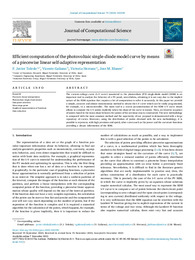Por favor, use este identificador para citar o enlazar este ítem:
https://hdl.handle.net/11000/34238Registro completo de metadatos
| Campo DC | Valor | Lengua/Idioma |
|---|---|---|
| dc.contributor.author | Toledo Melero, Fco. Javier | - |
| dc.contributor.author | Galiano, Vicente | - |
| dc.contributor.author | Herranz Cuadrado, Maria Victoria | - |
| dc.contributor.author | Blanes, José M. | - |
| dc.contributor.other | Departamentos de la UMH::Estadística, Matemáticas e Informática | es_ES |
| dc.date.accessioned | 2025-01-09T09:23:14Z | - |
| dc.date.available | 2025-01-09T09:23:14Z | - |
| dc.date.created | 2023 | - |
| dc.identifier.citation | Journal of Computational Science | es_ES |
| dc.identifier.issn | 1877-7511 | - |
| dc.identifier.issn | 1877-7503 | - |
| dc.identifier.uri | https://hdl.handle.net/11000/34238 | - |
| dc.description.abstract | The current–voltage curve (I–V curve) associated to the photovoltaic (PV) single-diode model (SDM) is an important tool to analyze the behavior of a PV panel, nevertheless, obtaining it is not easy due to the implicit nature of the SDM equation that requires a lot of computation to solve it accurately. In this paper we provide a simple, accurate and almost instantaneous method to obtain the I–V curve which can be easily programmed, for example, in a microcontroller. The main tool is a recent parametrization of the SDM I–V curve which allows to compute the I–V points explicitly when the slope of the curve is known. Then, an iterative sequence of points based in the mean slope between the points of the previous step is constructed. The new methodology is compared with the most common method and the superiority of our proposal is demonstrated with a large repository of curves. Moreover, using the distribution of points obtained with the new methodology, it is possible to represent, with high precision and speed, other curves such as the power and the curvature functions providing a deeper information of the SDM. | es_ES |
| dc.format | application/pdf | es_ES |
| dc.format.extent | 8 | es_ES |
| dc.language.iso | eng | es_ES |
| dc.publisher | Elsevier | es_ES |
| dc.relation.ispartofseries | 75 | es_ES |
| dc.rights | info:eu-repo/semantics/openAccess | es_ES |
| dc.rights | Attribution-NonCommercial-NoDerivatives 4.0 Internacional | * |
| dc.rights.uri | http://creativecommons.org/licenses/by-nc-nd/4.0/ | * |
| dc.subject | Piecewise linear interpolation | es_ES |
| dc.subject | Photovoltaic single-diode model | es_ES |
| dc.subject | Data point selection | es_ES |
| dc.subject | Mean slope point | es_ES |
| dc.subject | Graphical representation of functions | es_ES |
| dc.subject | Data reduction | es_ES |
| dc.subject.other | CDU::5 - Ciencias puras y naturales::51 - Matemáticas | es_ES |
| dc.title | Efficient computation of the photovoltaic single-diode model curve by means of a piecewise linear self-adaptive representation | es_ES |
| dc.type | info:eu-repo/semantics/article | es_ES |
| dc.relation.publisherversion | https://doi.org/10.1016/j.jocs.2023.102199 | es_ES |

Ver/Abrir:
Toledo_etAl_2024_J. Comput. Sci._75_102199.pdf
1,77 MB
Adobe PDF
Compartir:
 La licencia se describe como: Atribución-NonComercial-NoDerivada 4.0 Internacional.
La licencia se describe como: Atribución-NonComercial-NoDerivada 4.0 Internacional.
.png)